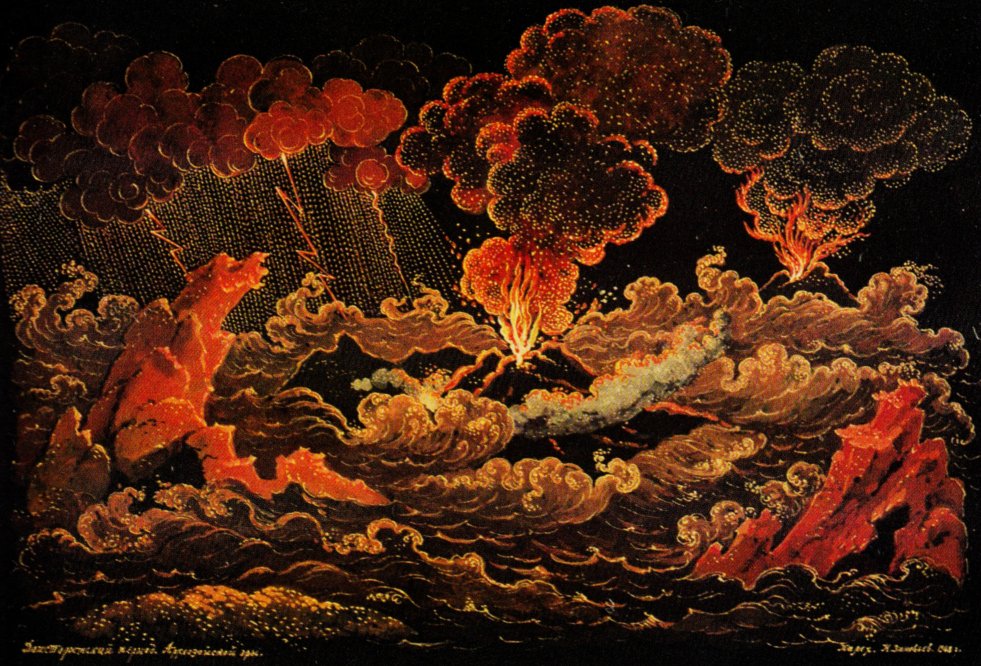1.1: Origin of Life
- Page ID
- 49646

In the strict sense, origin of life does not belong to biology. In addition, biologists were long fought for the impossibility of a spontaneous generation of life (which was a common belief from Medieval times to the end of 19 century). One of the founders of genetics, Timofeev-Resovsky, when he was asked about his point of view on the origin of life, often joked that “he was too small these times, and do not remember anything”.
However, contemporary biology can guess something about these times. Of course, such guesses are no more than theories based on common scientific principles, actuality and parsimony.
First, Earth was very different. For example, the atmosphere had no oxygen; it was much closer to the atmosphere of Venus than to the atmosphere of contemporary Earth and contained numerous chemicals which are now poisonous for most life (like CS2) or HCN). However, by the end of Archean first oxygen appears in the atmosphere, and in early Proterozoic, it started to accumulate rapidly. The process is called the “oxygen revolution,” and it had many consequences. But what the reason for oxygenation was nothing else than the appearance of first photosynthetic organisms, most likely cyanobacteria.
Second, the first traces of life on Earth are suspiciously close to the time of Earth origin (4,540 mya)— molecular clock place LUCA about 4,000 mya, and recently found first traces of cyanobacteria are 3,700 mya. Altogether, life on Earth was most of the time of its existence!
Third, first living things were most likely prokaryotes (Monera, bacteria). These could be both photosynthetic (cyanobacteria) and chemotrophic bacteria, as evidenced from isotope analysis of Isua sedimentary rocks in Greenland, and now also from the presence of stromatolites, the traces of cyanobacteria in the same place.
What was the first living thing? It has a name LUCA, Last Universal Common Ancestor, but only a little could be estimated about its other features. It was probably a cell with DNA/RNA/proteins stream, like all current living things. Unclear is how this stream appeared and how it happened that it was embedded into the cell. One of the helpful ideas is “RNA world”, speculation about times when no DNA yet exist, and even proteins did not function properly, but RNAs already worked as an information source as well as biological machines. Another possibility is that lipid globules, some other organic molecular and water formed coacervates, small droplets in which these RNAs could dwell. If this happened, then resulted structure could be called “proto-cell”.


